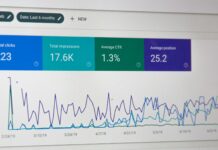Retail has changed dramatically in the past decade, but one thing’s clear: consumers expect more. Traditional personalisation is no longer enough. Shoppers now want hyper-individualised experiences that anticipate their needs, preferences, and timing. Predictive AI makes this possible, shifting the focus from mass personalisation to precision engagement and setting a new standard for modern retail.

From Personalisation to Hyper-Individualisation
Personalisation used to mean adding someone’s name to an email or suggesting products based on past purchases. That was enough to catch a shopper’s attention once. But those days are over. Now, consumers expect more: experiences that respond to them in real time. This shift has led to hyper-individualisation powered by predictive AI.
Unlike older methods, hyper-individualisation goes far beyond purchase history. It pulls in real-time behaviour, personal preferences, social signals, location data, and even the weather. For instance, rather than sending a generic ad for running shoes, a system might pick up on someone browsing hiking trails during cooler weather and suggest waterproof trail gear, something they hadn’t even been searching for. These suggestions feel less like marketing and more like a helpful nudge.
This approach isn’t limited to retail. Streaming platforms now recommend content based on time of day, user habits, and even the type of playlist playing in the background, fitting the moment, not just the history. Online sports betting platforms do the same, using past bets, favourite teams, and live odds activity to deliver timely, personalised suggestions. Many non GamStop betting sites have seen a rise in activity thanks to fast payouts, flexible payment methods, a wide range of sports markets, and added value through perks like welcome bonuses, free bets, and exclusive VIP rewards for regular and high-value users.
Retailers have a lot to gain by following the lead of other industries, It’s not just about selling anymore; it’s about showing up with relevance, timing, and value that actually connects.
Predictive AI and the Power of Data
The shift to hyper-individualisation relies heavily on data, both structured and unstructured. Predictive AI tools gather insights from browsing history, purchase frequency, device usage, location, social media activity, and even sentiment. Machine learning algorithms then use this data to forecast customer behaviour, detect intent, and adapt in real time.
For example, if a customer browses a skincare product several times but never buys it, predictive AI can detect hesitation and trigger a personalised incentive—like a limited-time offer or product tutorial. It can also predict when a loyal customer might run low on essentials and recommend reordering at just the right time, boosting both satisfaction and sales.
Real-Time Adaptability Across Channels
Hyper-individualisation works best when it flows seamlessly across all retail channels. Whether someone is shopping via a mobile app, website, or in-store, predictive AI ensures consistency. If a customer adds an item to their cart on mobile but doesn’t check out, the same item might appear in a personalised email later or be suggested in-store via smart displays or digital kiosks.
Retailers using AI to manage omnichannel experiences are already seeing improved retention. Predictive engines adapt to each touchpoint, ensuring the retail journey feels connected, relevant, and responsive. The goal is to remove friction and offer just the right prompt without overwhelming the shopper.
Enhanced Customer Loyalty and Lifetime Value
Hyper-individual journeys don’t just increase short-term conversions, they foster long-term loyalty. When customers feel seen and understood, they’re more likely to return. Predictive AI helps businesses build that relationship through consistent, meaningful interactions.
Retailers can use AI-driven insights to tailor loyalty programs to individual preferences, reward specific behaviours, and even predict when a customer is at risk of disengaging. Targeted retention campaigns, based on these predictions, can be deployed before the customer drops off, increasing lifetime value and reducing churn.
How Retailers Are Already Using Predictive AI
Predictive AI is already transforming how global retailers operate, proving how data-driven personalisation works in real life. Amazon has used predictive algorithms for years to power its recommendation engine. By analysing browsing habits, purchase history, and even cursor movement, Amazon suggests products with such accuracy that over 35% of its revenue reportedly comes from these recommendations.
Building on that, Sephora combines online and in-store AI tools to personalise beauty experiences. Its “Colour IQ” system gathers skin tone data, customer profiles, and purchase history to suggest ideal products and bundles. The AI also predicts when shoppers might need a restock and sends timely, personalised offers.
Walmart takes a broader approach, using predictive analytics to manage inventory and tailor marketing. It analyses local events, shopping trends, and user activity in its app to forecast demand and create personalised product suggestions and digital shopping lists.
Zalando, the European fashion platform, applies similar AI tools to style recommendations. Pulling from size info, return data, and fashion trends, Zalando’s system fine-tunes homepages and marketing emails to each user’s style and journey.
Conclusion
Hyper-individualisation, powered by predictive AI, is transforming retail. Beyond basic personalisation, businesses now create tailored journeys for customers based on behavior, context, and timing. As technology evolves, successful brands will use it to understand, serve, and connect better. The future of retail is predictive, responsive, and uniquely human.





















